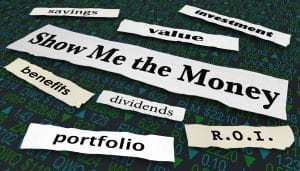
Christopher Kuehl
Managing Director • Armada
Credit managers and economists face the same worries and concerns at the start of 2023 that we confronted at the end of 2022. What are these, you may ask? Obviously, there is a very long list of things that can keep one awake at night as every business has its unique issues but four major issues will command attention from just about everyone. Three of these are pretty familiar by now but the fourth is perhaps a little less familiar.
Issue Number One: Inflation – Of course it is. Many of the other issues derive from this one and it was the focus of much angst last year. The good news is that it appears there has been a peak in the expansion of global inflation. Europe just reported that inflation numbers fell below double digits for the first time in several months but the pace as slowed somewhat. It is now at 8.5% and the hope had been a decline under 8.0%, while the US has seen the CPI drop to 7.1%. The index the Federal Reserve uses for determining inflation is the Personal Consumption Index as it is more accurate than CPI. The problem is that this index tends to lag and the most recent data is from December. The PCE dropped from 6.1 to 5.5 and the PCE index minus food and energy dropped from 5.0 to 4.6. It is clear enough that inflation has started to fade but it is equally clear that it is still higher than preferred as the Fed would like to see PCE at no more than 2.5. What can be asserted at this stage is that we appear to have made it through the worst of it and can expect more improvement through the year.
Issue Number Two: Recession – The bottom line is that inflation and recession are inextricably linked. The prime motivation for the recession threat right now is the attempt on the part of central banks to thwart inflation with higher interest rates. The notion is that these banks hike rates until something breaks and then they start to lower rates to fix what they broke. The fact that inflation has started to subside means that rate hikes may start to slow down and maybe reverse later this year. If one reads the comments by economists carefully it is apparent they are not predicting as much as they are warning. Essentially the message is “if you keep up this financial pressure you will see a recession”. The call is for these central banks to ease off now that inflation seems to be retreating and if they do so the recession threat fades. The European Central Bank is slated to hike by another half point and with the slowing pace of inflation reduction there will likely be more. The US Federal Reserve is making the same noises.
Issue Number Three – Supply Chain – This has been at the top of the list of concerns for months but there are signs of improvement showing up. According to the recent Producer Price Index numbers there has been a reduction in factory gate prices and that is a reflection of the improved supply chain. Companies have been able to find replacements for goods that came from China and now there is potential improvement of that Chinese supply since the move away from the lockdowns. It is not that supply chain woes are over as it is obvious that many sectors are still being affected. The good news is that it is less of a driver for inflation than was the case at the start of 2022.
Issue Number Four – Labor – This is certainly not a new or unique issue but the situation has changed and presents different challenges in 2023. The chronic problem has been worker shortage. Nothing substantial has been done to address this in years and it is now hitting crisis level. By 2030 every single Boomer will have reached retirement age and that is 74 million people (out of a total population of 330 million). These people will be very hard to replace and it will be expensive. The number way that companies have recruited new workforce has been through poaching from one another. That is expensive as this requires higher pay and it also means paying existing workers more so they are not poached. The inflation worries centered on supply chain and commodity prices last year and in 2023 the focus will be on labor costs. The growth of “alternative” work further complicates this issue. The “gig economy” is a real thing and has drawn millions of people into a work environment that is not easy to categorize.
Recent Posts
- How Credit Managers Can Step into Executive Leadership November 13, 2024
- Economic Reconnaissance | Putting the FAB in Fabrinomics!! October 1, 2024
- Economic Reconnaissance | Sifting Through the Noise During “Silly Season” August 1, 2024
- A Big Win for Creditors of Small Business Debtors June 27, 2024
- Economic Reconnaissance | The Fable of Henny Penny June 4, 2024
- Economic Reconnaissance | Mixed Reviews for 2024’s Economy February 1, 2024










